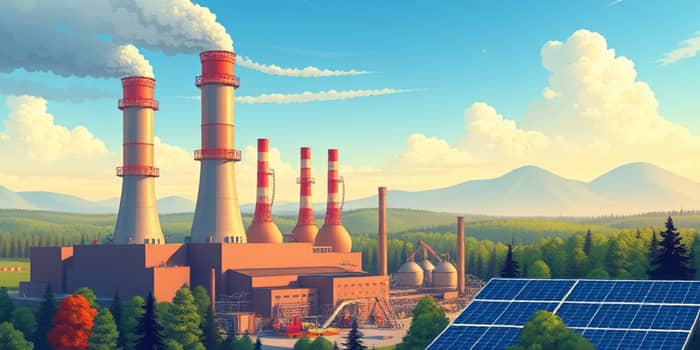
In the race to limit global warming and achieve net-zero emissions, carbon capture, utilization, and storage (CCUS) stands out as an essential ally. While current capture rates remain low, rapid innovation and investment can transform our energy landscape and safeguard the planet.
CCUS technologies capture carbon dioxide (CO₂) from large sources or directly from the air, then either repurpose it for industrial applications or sequester it underground. Despite its promise, CCUS currently accounts for only around 0.1% of global emissions captured—about 50 million metric tons per year.
Meeting the IPCC and IEA scenarios requires scaling this figure to at least 1 billion tons by 2030 and several billion by 2050. This discrepancy underscores the urgent need for accelerated deployment and robust innovation to bridge the gap.
Four major carbon capture approaches are driving progress:
Emerging separation techniques—such as membranes, chemical looping, and calcium looping—promise to lower energy consumption and cut costs. Hybrid modular systems are also under development, aiming to deliver efficient, scalable solutions that industries can integrate with minimal disruption.
The global CCS market is valued at $9.26 billion in 2025 and projected to reach $81.86 billion by 2037, growing at a compound annual growth rate of 19.8%. Meanwhile, the pipeline of projects under development, construction, or operation can capture 361 million tons of CO₂ annually—nearly 50% more than a year earlier.
Major funding initiatives include:
Despite this momentum, deployment remains far below what climate models demand. Closing this gap requires unprecedented investment and policy support, alongside streamlined permitting processes and clear regulatory frameworks.
Over 50 countries host CCUS projects in various stages, with strong activity in North America, Europe, China, and the Middle East. While 98% of captured CO₂ is permanently stored underground, only 2% is currently utilized in greenhouses, chemical production, and synthetic fuel processes.
Key industrial sectors—power generation, cement, steel, and petrochemicals—stand to benefit most from CCUS. Integrating capture units into existing facilities offers a bridge to low-carbon operations while renewable energy adoption scales up.
Demonstration plants and pilot projects are illuminating the path forward. Notable examples include:
Each project leverages unique approaches—supercritical CO₂ as a working fluid, modular capture units, or large-scale chemical looping techniques. Together, they showcase how diverse innovations drive progress across geographies.
Policy incentives such as the U.S. 45Q tax credit and the EU’s Carbon Border Adjustment Mechanism (effective 2026) and Corporate Sustainability Reporting Directive are reshaping corporate behavior. These regulations raise transparency, hold companies accountable for emissions, and make CCUS more economically attractive.
However, challenges persist: high upfront costs, uncertain permitting timelines, and mixed public perceptions. Advocates stress that CCUS must be part of a broader climate strategy—complementing renewables, energy efficiency, and nature-based solutions.
A vibrant ecosystem of startups, established energy firms, research institutions, and governments is essential for success. Companies like Climeworks, Carbon Clean, Occidental Petroleum’s 1PointFive, and Carbon Engineering are forging strategic partnerships and investments to accelerate technology maturation.
Conferences such as the Carbon Capture Technology Expo North America facilitate knowledge sharing, helping stakeholders navigate technical, financial, and regulatory hurdles. Collaborative funding models—combining public grants, private capital, and philanthropic support—offer a pathway to de-risk early deployments.
Beyond storage, turning captured CO₂ into valuable products will bolster economic incentives. Potential applications include sustainable plastics, aviation fuels, and building materials—each contributing to a circular carbon economy.
Simultaneously, nature-based removal methods like reforestation and macroalgae farming provide complementary benefits. When powered by renewable energy, direct air capture can remove residual emissions that are otherwise hard to abate.
Together, technological and natural approaches form an integrated strategy to achieve long-term climate resilience and sustainability.
Innovation in carbon capture technologies is no longer optional—it is a cornerstone of global climate action. By championing research, providing clear policy support, and forging dynamic partnerships, we can scale CCUS to meet our collective targets.
Now is the moment for entrepreneurs, investors, and policymakers to unite behind this transformative agenda. With concerted effort and unwavering commitment, carbon capture can evolve from niche pilots to a mainstream climate solution—propelling us toward a cleaner, more resilient future.
References













